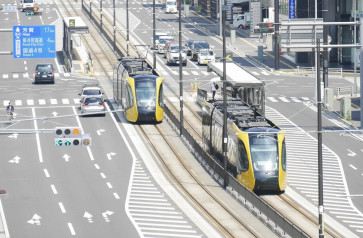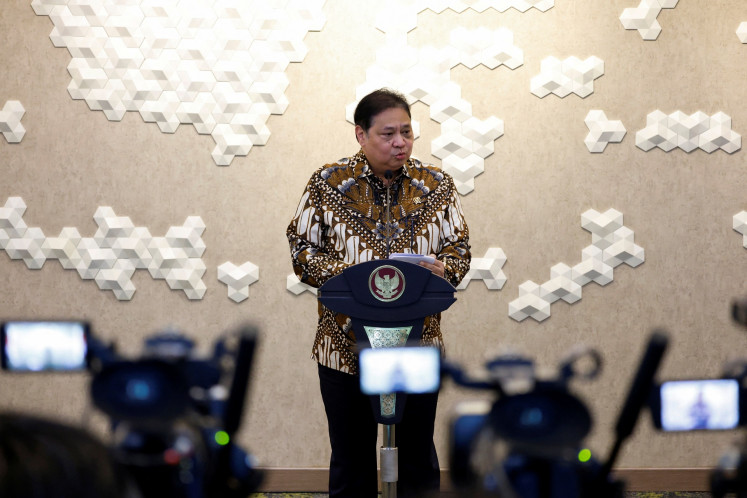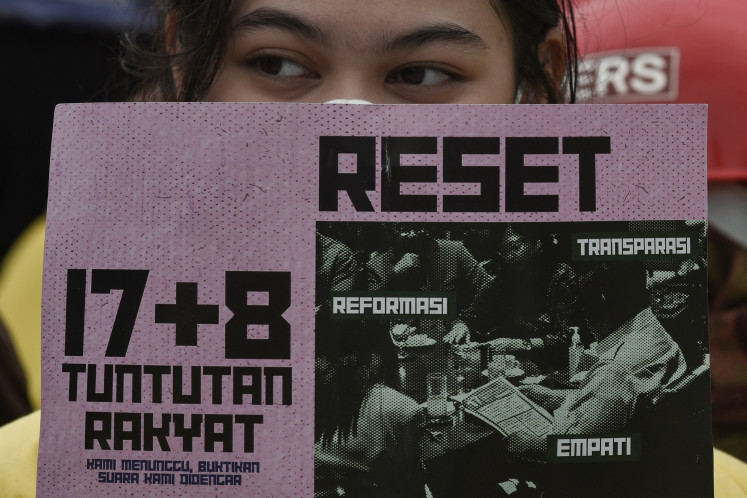Popular Reads
Top Results
Can't find what you're looking for?
View all search resultsPopular Reads
Top Results
Can't find what you're looking for?
View all search resultsFinding new strategies for new sources of growth
Tourism is one of the other potential sectors that can generate growth and can also be labor-intensive.
Change text size
Gift Premium Articles
to Anyone
S
ince the pandemic, governments worldwide have struggled to revive economic growth. Despite substantial efforts and stimulus packages, the recovery still has not yet reached pre-pandemic levels. The United States faces recession concerns, China continues to grapple with a weakening property sector and demographic challenges, and the European Union's economy has been affected by the Russia-Ukraine conflict.
Indonesia's economy faces its own set of complex challenges. Although the country has shown economic resilience, achieving consistent growth above 5 percent remains difficult. Slowing global demand has negatively impacted export performance, particularly in the manufacturing sector. The Purchasing Managers' Index (PMI), which measures manufacturing activity, has been in contraction for the past two months.
Recent demographic data also reveal concerning trends.
The middle class, a critical component of Indonesia’s economy, has been shrinking. Compared with pre-pandemic levels, the proportion of the middle class has declined from 21 percent (in 2019) to 17 percent (in 2023) of the total population. This phenomenon could lead to a notable impact on the economy as consumer spending will decrease, and will negatively impact businesses that rely on this demographic's purchasing power. Additionally, a shrinking middle class might worsen income inequality and social tensions, as the gap between the wealthy and lower-income groups widens. This likely explains why household consumption growth has recently fallen below average. Consumer spending grew by 4.9 percent in the second quarter of this year, below the five-year average of 5 percent.
The lingering effects of the pandemic are evident, even three years after it ended. The pandemic led to changes in lifestyles and consumption patterns, which have continued to impact the economy. Combined with high inflation and interest rates, many individuals have become more cautious with their spending, focusing on savings or meaningful, experience-based purchases. People now spend more on entertainment, travel, sports activities and digital services, rather than traditional retail products.
In China, the economy is increasingly driven by the high-tech sector, electric vehicles and services, leading to subdued consumption of traditional retail products. Similarly, in the US, economic drivers are centered on services and entertainment. In Asia, countries are competing to host international artists' concerts in hopes of boosting their economies. These trends reflect a shift in how we view economic growth going forward. Will this structural shift in demand patterns continue?
For Indonesia, with a population of 283 million, the fourth-largest in the world, labor-intensive sectors remain crucial for growth. Manufacturing, a significant contributor to the economy at about 20 percent of GDP and a major source of employment, has lagged behind. The services sector, such as transportation, accommodation and health services, has seen faster growth. Weak global demand and shifting consumer preferences have contributed to the slowdown in manufacturing. This may be one of the main reasons why the middle class has been declining.
Since the pandemic, the government has deployed various stimulus measures, but the focus has primarily been on lower-income groups, which is understandable since priority is needed at the time. While these measures have been effective in reducing extreme poverty, they have not prevented the decline of the middle class, which has shifted to lower-middle and vulnerable income categories. Therefore, addressing this issue should be a priority for the next government.
The proposed state budget for 2025 aims for a 5.2 percent growth rate, but the long-term goal for Indonesia is still achieving a 6-7 percent growth to escape the middle-income trap. Hence, new strategies are urgently needed. We must assess the challenges of developing new labor-intensive sources of growth. Reviving the manufacturing sector is particularly challenging, amid declining demand for Indonesia’s manufactured goods. Therefore, we need to look further, to what other sectors can generate massive employment.
The services sector may also be the next focus. Creative strategies in improving the quality of the health sector, streamlining the regulations and combining it with tourism, which is currently being promoted, is an example of a breakthrough in finding a new source of growth. Tourism is one of the other potential sectors that can generate growth and can also be labor-intensive.
Indonesia still has many other potential sectors that can be revitalized as new growth drivers. Identifying and supporting various growth sectors through targeted stimulus policies will be essential for sustaining economic progress.
***
The writer is a senior economist at Bank Mandiri.











